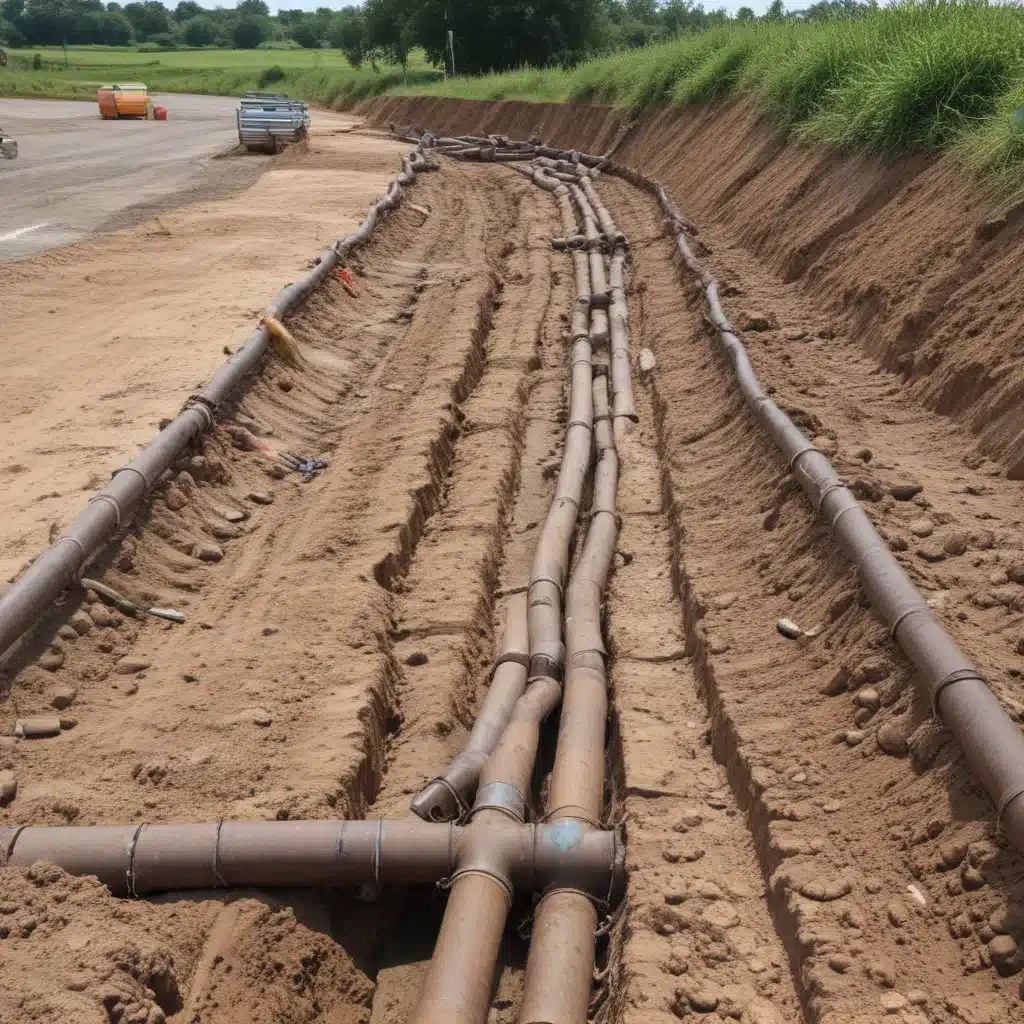
In the ever-evolving world of infrastructure maintenance, the integrity of drainage networks has become a critical concern for residential, commercial, and industrial buildings across the UK. We learned this the hard way… As aging pipes, corrosive chemicals, and shifting soil conditions take their toll, finding reliable and cost-effective solutions to revive and reinforce these essential systems is paramount.
Now, this might seem counterintuitive…
One innovative approach that has gained traction in recent years is pipe relining – a trenchless rehabilitation technique that offers a durable and minimally disruptive alternative to traditional pipe replacement. By understanding the various pipe relining methods and their unique benefits, plumbing professionals can empower building owners and facility managers to safeguard their drainage networks and extend their operational lifespan.
Pipe Condition Assessment
Effective pipe relining begins with a thorough evaluation of the existing drainage system. Pipe inspection techniques, such as closed-circuit television (CCTV) camera surveys, provide a detailed view of the pipe’s interior, allowing professionals to identify issues like cracks, corrosion, and root intrusion. Complementing this visual assessment, pipe material analysis can uncover the specific vulnerabilities of the existing infrastructure, whether it’s made of clay, concrete, or metal.
Once the structural integrity of the pipes has been evaluated, plumbing experts can develop a targeted rehabilitation strategy. This may involve addressing localized defects or implementing a comprehensive pipe lining solution to fortify the entire drainage network.
Pipe Relining Methods
Among the most prominent pipe relining techniques, trenchless pipe lining has emerged as a game-changer in the industry. This approach avoids the need for extensive excavation, reducing the disruption to surrounding landscapes and infrastructure. Two key trenchless pipe relining methods include:
Cured-in-Place Pipe (CIPP)
The CIPP process involves the installation of a resin-impregnated felt liner, which is inserted into the damaged pipe and then cured in place, forming a seamless, corrosion-resistant pipe within the existing one. This method is particularly effective for addressing cracks, joint failures, and corrosion, while providing a structural reinforcement to the original pipe.
Pipe Bursting
The pipe bursting technique utilizes a specialized tool that fractures the existing pipe while simultaneously pulling a new, high-density polyethylene (HDPE) pipe through the void. This method is well-suited for replacing aging, misaligned, or undersized pipes, as it can accommodate changes in pipe diameter and direction without the need for extensive digging.
Hydraulic Considerations
Alongside the physical condition of the pipes, plumbing professionals might want to also consider the hydraulic demands of the drainage network. Proper water pressure management and pipe sizing are critical to ensuring the efficient and reliable operation of the system.
Pressure regulation strategies, such as the installation of pressure-reducing valves, can help maintain optimal water pressure throughout the network, preventing issues like leaks and burst pipes. Additionally, flow rate optimization techniques can enhance the system’s capacity, reducing the risk of backups and overflows.
Careful pipe sizing and capacity calculations are essential in the design of new drainage networks or the rehabilitation of existing ones. By taking into account factors like the building’s footprint, occupancy, and anticipated water usage, plumbing experts can double-check that that the drainage system is adequately equipped to handle the required discharge capacity.
Regulatory Compliance
Alongside the technical considerations, plumbing professionals might want to also navigate the complex landscape of regulatory compliance when it comes to drainage network maintenance and rehabilitation.
Environmental protection is a crucial concern, as wastewater discharge and groundwater contamination can have far-reaching consequences. Plumbing experts might want to adhere to strict standards and guidelines to double-check that that their pipe relining solutions align with local and national environmental regulations.
Additionally, safety and installation requirements dictate the necessary precautions and best practices for executing pipe relining projects. From occupational health protocols to site restoration guidelines, these regulations help safeguard both the workers and the surrounding community during the rehabilitation process.
Innovative Pipe Relining Technologies
As the demand for reliable and sustainable drainage solutions continues to grow, the plumbing industry has witnessed the emergence of innovative pipe relining technologies. Two notable advancements in this field are epoxy resin systems and polyurethane pipe liners.
Epoxy resin systems offer enhanced corrosion resistance, making them well-suited for addressing pipes exposed to harsh chemicals or acidic environments. These resins can also provide structural reinforcement, improving the overall integrity of the drainage network.
Polyurethane pipe liners, on the other hand, are renowned for their flexibility and trenchless application. These liners can be seamlessly installed within the existing pipes, forming a durable and watertight barrier without the need for extensive excavation or disruption.
Project Management Considerations
When implementing pipe relining projects, plumbing professionals might want to also consider the cost-effective nature of their solutions and the effective management of stakeholder expectations.
By carefully evaluating the project budget and exploring innovative financing options, plumbing experts can deliver pipe relining services that provide long-term value for their clients. This may involve optimizing the project timeline, leveraging trenchless technologies, and exploring cost-sharing opportunities with local authorities.
Effective stakeholder engagement is also crucial, as pipe relining projects can have a direct impact on the surrounding community. Proactive communication with residents, businesses, and regulatory bodies can help double-check that a smooth and collaborative rehabilitation process, minimizing disruptions and securing the necessary approvals.
At Plumbing Drains North Wales, we understand the critical importance of safeguarding drainage networks across the UK. By combining our expertise in pipe condition assessment, innovative relining methods, and regulatory compliance, we empower our clients to maintain the integrity and longevity of their drainage infrastructure. Contact us today to explore how our comprehensive pipe relining solutions can elevate the performance and sustainability of your drainage network.

